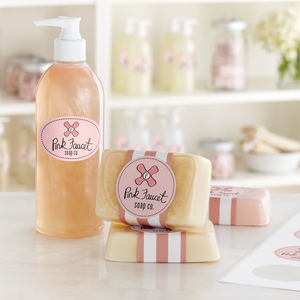Your logo is often one of the first things customers see on business cards, product packaging, marketing materials and your website. Are you thinking about developing a logo for your company, or considering updating your current logo because it just doesn’t seem to be working? Doing either can be a smart move.
After all, a well-executed logo can:
- Make your business more memorable
- Reinforce your branding
- Increase company awareness
- Boost customer loyalty
- Promote an emotional bond with your customers
- Distance your business from your competition
- Accelerate your sales
But, creating a logo is also a big step.
“Your logo is the first thing people often see about your company,” says Bill DeSmet, a professional graphic designer and owner of Ballistic Designs, an award-winning graphic design company specializing in brand communications. “And they’ll use it to form an instant opinion about your business.”
In other words, it’s a serious endeavor – not some whimsical project. So, let’s look at some basic design considerations that can turn your logo into a winner.
Know yourself – and your audience
An effective logo starts by understanding your business and target audience. Think about what makes your company unique, and what captivates your audience.
“A logo is a personalized extension of yourself and your business,” says DeSmet. “But, you need to use that in a way that best entices your audience to buy your products or services.”
Be sure to research your competition to generate possible logo ideas. But, don’t be a copycat. Stay true to what makes your business special. Remember, separating your company from your rivals is an integral part of intelligent logo design.
Choose your colours wisely
Simplicity rules when it comes to the number of colours in your logo.
Limiting your design to two or three colours allows your logo to more easily transfer to a variety of collateral options – such as business cards, postcards, stationery, labels, brochures, websites, banners, signage, clothing, and even mugs. Be aware – using more than that limits your applications.
What about color choices? Again, it pays to know your customers.
“Different people respond to different colors in different ways,” says DeSmet. “What may look great to you may not appeal at all to your target audience.” For instance, softer colors – like pastels – could be ideal for a nail salon with a female-based audience. But, they wouldn’t play well for a men’s suit store.
Another consideration is how the logo and its colors appear in different environments. There may be a shift between how it appears online, such as on your website or your email, versus on printed materials.
Color combinations also matter in terms of readability. Red and green may look wonderful as a backdrop on a Christmas card. But, these contrasting colors on a business card will make it difficult to read. And, as DeSmet points out, unless you have a business that’s associated with a particular time of the year, it’s best to avoid colors with strong seasonal ties.
Strategize your typeface options
Logos come in three basic types: those with only a symbol, those with only a typeface, and those that contain both.
The typeface used should reflect the personality of your business and engage your audience. “Let’s say you own a quirky coffee house. A fun typeface like Sans Serif could be a good choice,” says DeSmet. “But, if you run a law firm, a more conservative font like Times New Roman or Garamond could be a smart option.”
By the way, many use the terms “font” and “typeface” interchangeably. But, there’s a fine distinction. A “font” is a collection of symbols and letters that make up a type “family.” Meanwhile, a “typeface” refers to a group of fonts within the same style. For example, you might select a Helvetica typeface for your business card, and use font options in bold and italic.
One final important decision
Should you do it yourself or hire someone? If your budget allows it, hiring a professional designer can be a worthwhile option.
If you’re looking for a more affordable option right now, or feel like tapping into your inner designer, there are free or low-cost design tools available online that allow you to channel your creativity and develop an impressive logo that captures your uniqueness.
No matter which path you take, a logo can be a critical element of your marketing strategy. And it’s an investment in your business. When you make sound decisions with your logo design, it can pay off in many ways for years to come.



Validate your login